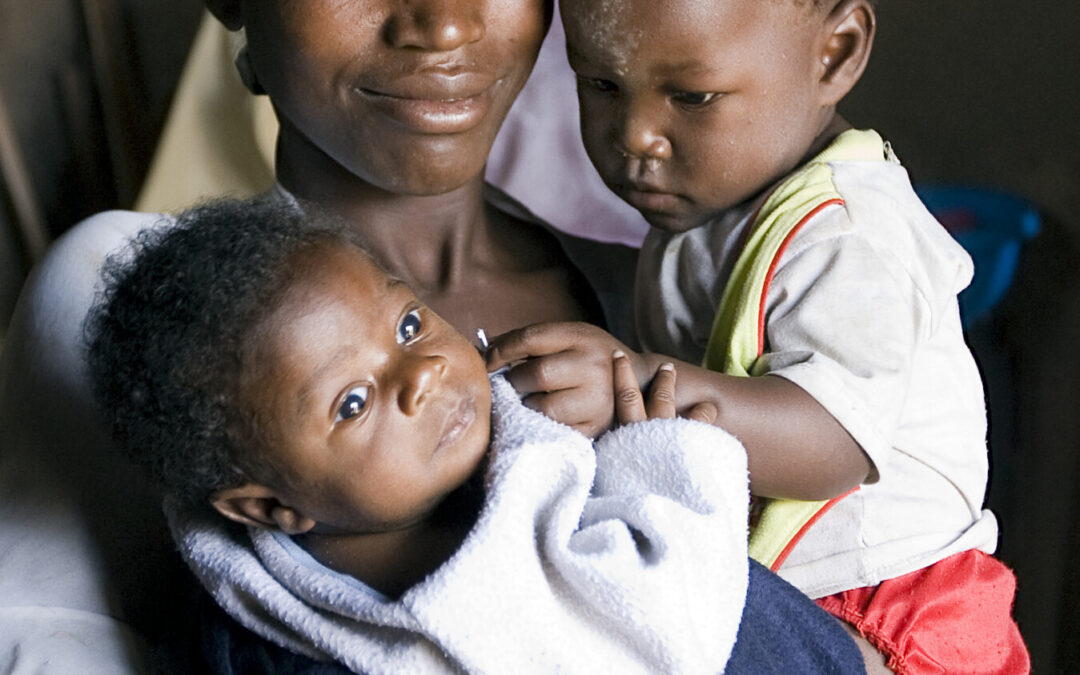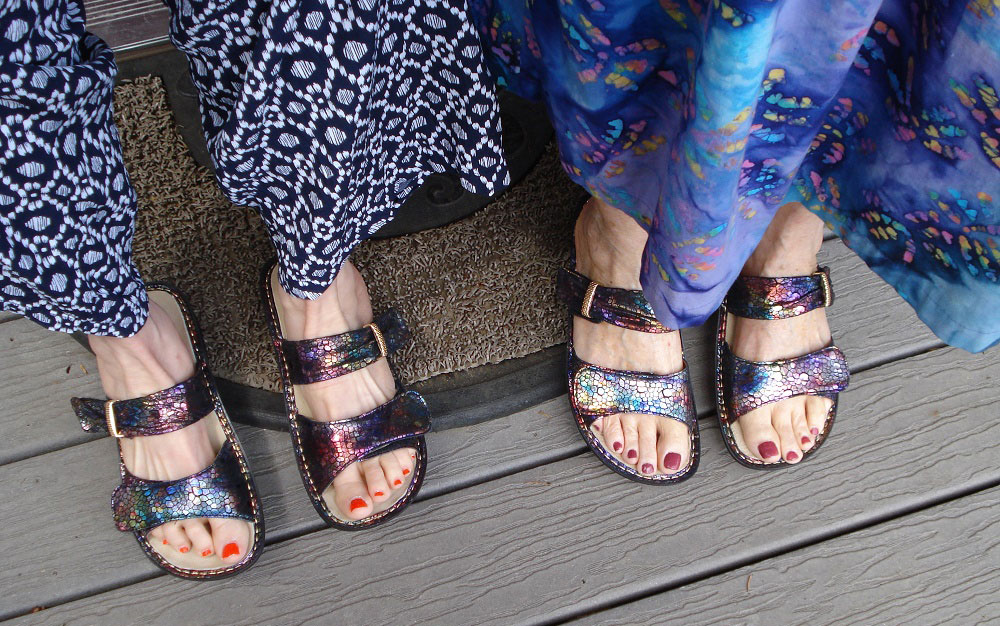
by wp-admin | Dec 9, 2021 | Exploring the Mental Fitness Formula
Imagine the shadow in this picture is my Adult and the very subtle pattern in the rivulet represents my three Child Brain Habits. It’s not easy to step out and take a picture of what happens in your brain. Let’s try to help you get a picture of these brain habits to help your Adult catch them at work.
To reach mental fitness your Adult needs all the help it can get to manage your own fight-or-flight reactions and then try to cope with the people and activities in your life. When it knows what to expect from your mind it can do this better. It’s pretty easy for your Adult to recognize a toxic belief and the Parent laying it on your Child, especially when you’ve learned what the most common beliefs are. Your Child’s plunge into fight-or-flight can be felt in your body and almost heard in its usual complaints of I can’t stand it and this is unbearable. Your Child Brain Habits are more difficult to identify and overcome.
These deeply imbedded ancient brain habits must have been helpful during times when our Adults had to recognize threats very quickly for survival. Speed must have been more important than accuracy then. I’ve named them Child Brain Habits because young children’s smaller, immature brains naturally use them to interpret what’s happening. They are: black-and-white thinking, personalization and over-generalization. When your Adult learns to catch them quickly, it can head off a whole lot of drama at its root.
These three brain habits share many of the same characteristics:
1) Since they’re evident in very young children and other mammals, they were probably wired-in for our protection early in human evolution.
2) They persist throughout your life, despite Adult efforts to retrain your mind.
3) Each one can have a broader impact on you than a toxic belief.
4) They each lead your Adult in a direction that sabotages it.
5) Since they’re constantly available, they appear in many situations without being noticed.
6) Each one influences you in more than one way, making it harder to identify and overcome it.
7) They set off many of your Toxic Beliefs, which can’t be permanently revised without also combatting the underlying brain habit.
8) Often more than one brain habit occurs at a time.
You can practice recognizing these habits in yourself, but it’s fascinating to see them play out among others. They’re pervasive in political discussion, religious theory, committee interactions and any time people come together. It’s helpful practice for your Adult to look for them when you’re not involved, on television or in movies or when just listening to others. These habits are deceptively simple and even those with the strongest Adult can fall under their influence.
It can be depressing to recognize how really fragile our human grip on reality is while you see people embrace these habits with passion and conviction. At a certain point, however, it’s refreshing to have your Wise Parent help you keep your perspective. To build this Parent’s wisdom, it’s fun to find wise quotes from others who have found ways to handle these primitive traits in your human nature. Sometimes you’ll even find yourself laughing at how absurd it can get, even for yourself.

by wp-admin | Dec 9, 2021 | Exploring the Mental Fitness Formula
First we’ll look at black & white thinking, the simplest and easiest Child Brain Habit to defuse. It prompts you to automatically sort all you see, hear and feel into polarities: black or white, right or wrong, loving or rejecting, trustworthy or unreliable, bad or good, okay or not okay, etc. As you follow this discussion, you’ll notice that this habit operates in different directions, when people use it for themselves and when it impacts how they relate to others. .
Let’s look at the example of three-year-old “Sherry,”* who was brought in for counseling after she had tried to throw herself out of the family’s moving car three times. Sherry’s parents had divorced six months earlier and claimed to get along pretty well. However, Sherry felt that she had to choose between them, and that was devastating for her. Relying on her black & white approach, she felt pressed to decide which parent was good and which one was bad. It seemed that no amount of reassurance could help her understand that she didn’t have to choose. I struggled with how I could reach her three-year-old mind to guide her out of this black-and-white trap.
Sherry always came dressed in pink and said it was her very favorite color. I asked her if she would change her mind and stop loving pink if her mom, dad or some of their friends didn’t like pink. Thoughtfully, she shook her head “no” as she considered this. I said the same goes for her feeling about each of her parents; she can love both of them, even if someone else doesn’t. She was able to use this pink bridge to overcome, at least for this problem, her habit of seeing things in black & white with no other options.
This polarized way of sorting experience can prevail throughout your life. But once your brain matures, you’re capable of managing this tendency on your own. Your Adult must monitor for this habit along with the other triggers for fight-or-flight. You wouldn’t flee by jumping out into traffic, but even in less disturbing situations than Sherry’s, black & white thinking can leave you distressed.
Note how this either-or view can intensify each of the first three Toxic Beliefs: Belief #1, If I don’t have x’s approval, I’ll be devastated. Belief #2, If I don’t get this (promotion, recognition) I’m a failure. Belief #3, If I don’t get this done, I’m bad (irresponsible, selfish, careless) and I deserve to have people blame and punish me. The habit affects how you believe others see you and how you see yourself. You’ll also tend to apply it when you see another person make a mistake and judge her same way you judge yourself, or worse.
The Child in the person you judge or your own Child might trigger fight-or-flight by thinking, that’s unfair, I can’t take this, or similar phrases and leave one of you very upset. Sherry felt that if she had to find one of her parents bad, selfish, weak or uncaring it was unbearable and she sought flight. Her black & white thinking intensified how she interpreted her toxic beliefs and it can do that with yours as well. Once your Adult can recognize a brain habit’s influence, it can reduce its impact, making your toxic beliefs more open to revision.
When you recognize that someone else may be caught up in black & white thinking, your Adult can avoid joining them. If it’s one of your friends, you may be able to invite them to take a break and cool off before they continue the conversation. This is an easy habit to shut down. Just remind them of some exceptions that illustrate the gray areas. For example, if someone says, “I just don’t trust him,” suggest that they might be able to trust him to be on time, or pay his bill at lunch, even if he is less than discreet. Help him see that trust isn’t an either-or condition; it’s multi-faceted. The same goes for any other polarized view.
You must avoid feeling stupid (as opposed to wise) when you see that you’ve backed yourself, or someone else, into a corner with this inherited way of thinking. It’s not your fault that once upon a time our ancestors needed to react this way to survive. They may not have had the time to consider any other options. Your Adult can begin to find and use Wise Parent reminder phrases to help you cut through a brain habit’s influence: There’s no immediate threat, I can take my time to check out my options: There’s no tiger in sight, I can wait and think about this. And a brief word for your Child, like, We’re safe, no worries.
*All names in these post stories are fictional.

by wp-admin | Dec 9, 2021 | Exploring the Mental Fitness Formula
Do you often feel like the only place you can find peace is one like this? People offer innumerable triggers for fight-or-flight reactions. While it’s wonderful to retreat to such an inspiring spot, it’s possible to be at peace, even when you’re with other people. Your Adult can learn to recognize another Child Brain Habit, Personalizing, that causes confusion when people interact. Like black & white thinking, its influence operates in more than one direction.
Personalizing is probably the main reason that human nature has a bad reputation. It’s so prevalent, it could be seen as humans’ default mode of reacting. It occurs when you blame yourself for negative things that happen to you, that were not in your control. It also occurs when you blame others for negative things that were out of their control. Sometimes we call this “taking things too personally.” Personalizing is a habit that increases fight-or-flight reactions in cases where at least four Toxic Beliefs are triggered.
1) Toxic Belief # 1, when you blame yourself.
After “Janet” and her husband divorced, she sought counseling for their three-year-old son “Winston.” He had come to her one morning and sadly commented, “I’m going to go away in an airplane.” She asked him why and he said, “then Mommy won’t cry and Daddy won’t cry.” He had personalized the cause of their pain. Heartbroken, she tried to assure him that the divorce wasn’t his fault, but he didn’t believe her and continued to be anxious and sad.
Winston’s mother and I struggled to find a way we could reach his three-year-old mind and relieve his guilt. Finally we remembered that Janet’s sister Elaine had a baby six months ago that Winston adored. We helped Winston imagine a time before he was born, by reminding him of when his little cousin was still in Elaine’s tummy. Once he got that, Janet told him, “even before you were in my tummy, Mommy was crying and Daddy was crying.” Winston responded immediately, like a huge weight had dropped from his shoulders.
Although Janet said she and her husband had an amicable divorce and had not fought over Winston, he still felt responsible. Very young children believe the world revolves around them; the baby cries and the parent comes. Belief #1 is true for young children, who actually do need the support and love of a parental figure to survive. Because of this, they need to be well- attuned to their parents’ feelings, as Winston was. By adulthood we could realize that we have little power to protect others from painful experiences, except for doing our best to treat them with kindness. Unfortunately, we don’t lose our original bias towards personalizing what others do. Wise parents help their children learn to manage this as Janet did with Winston.
Personalizing can especially stoke your fight-or-flight reaction to Belief #1 when someone you rely on seems to withhold her approval, attention, support or acceptance. Once you’re an adult it’s not true that you must have the approval and support of one or more significant people. To have peace your Adult must revise Belief #1 and remind your Parent and Child parts that, when you don’t receive this, you may be very disappointed, but your life is not threatened. It’s rarely all about you and you actually can stand it.
A phrase I coined to help me when I struggle with feelings of responsibility in times of others’ distress, whether they blame me or not, is: When you don’t have the power, you can’t have the responsibility. Another phrase that a client created to keep her from taking on other’s problems is somebody has a problem here, but it’s not me. As the oldest child in my family, I was often pressed to feel and take responsibility when my mentally- ill mother created painful situations for any of us. This became deeply embedded in my toxic beliefs and continues to affect me, especially in close relationships. These phrases offer my Adult a quick reminder of how I’ve revised Belief # 1. If I couldn’t avoid personalizing and hadn’t revised this belief, my ability to have close relationships would have been very limited.
2) Toxic Belief #3, when you blame others.
Personalization intensifies fight-or-flight responses when Belief # 3 is triggered. You may become furious with another person because you jump to the conclusion that his offensive behavior is deliberately aimed at you. To calm yourself, your Adult must begin with recognizing that you may have taken his behavior too personally. Once your Adult recognizes this, it will be able to revise Belief #3, that people whose behavior doesn’t meet your standards should be blamed and punished. I like my client’s phrase for this one too: their behavior is rarely my problem, but it will certainly cause them distress in the long run.
In any case, it’s best for your Adult to do a reality check to find out, when possible, what has actually been the thinking of the offending person. Often you’ll find that they hadn’t meant to target you at all. If they were just careless and recognize it, they may apologize. If they were angry with you and tell you why, you might even decide you owe them an apology.
It’s really possible to “keep the air clear” between you and one or two other people at a time, simply by using your words to ask “I’m confused about what was going on with you when you……?” To undertake this you may need to hold back a very strong sense that they did mean you harm, and most often you’ll have to overcome anger and anxiety. Each time I’ve made myself do this, I’ve felt these things, but it got easier the more I did it. I discovered how often Personalization can interfere to make you believe others are focused on you when they are not.

by wp-admin | Dec 9, 2021 | Exploring the Mental Fitness Formula
Toxic belief #2, that you must surpass others in at least one area to be worthwhile, is also fueled by personalizing. Consider sibling rivalry or even the power struggles within a community. It seems to be wired-in for humans to feel threatened when someone in their own group exceeds their accomplishments. Even though they can usually accept that someone elsewhere in the world might exceed their expertise, they can really hate and envy someone nearby who does it. This suggests that in our distant past it was life-threatening if someone in our community performed better at something which we did well. Maybe in those times there were life-or-death consequences for the loser. In war and work situations today, losing our position can still be devastating if not deadly.
Toxic Belief #2 causes envy and jealousy and reduces people’s ability to cooperate in their endeavors. I doubt you can ever stop feeling a twinge of this at times because it’s probably wired-in. To revise it your Adult needs to step back from the situation and stop taking any of it personally. Instead, it needs to guide your Parent parts to recognize that for most people today, it’s not necessary to outperform others. If someone else gets the job or recognition you’d hoped and worked for, you have other groups you can join and/or many other ways you can contribute.
Toxic Belief #7 that it’s unbearable when you work hard for something and you don’t get it, often accompanies Belief #2 when you personalize what happens. For this my Wise Parent has adopted the phrase, Reality is least painful when you face it quickly. It’s a well-known fact that many situations reward very few of those who work hard to contribute, whether it’s business, sports, entertainment or the arts. It’s also true that often people who don’t seem to deserve the prize get it. We can choose not to take any of this personally; in reality, most often it’s our lot as human beings not to accomplish all we attempt, sooner or later, no matter what we do.
From the start it’s wise for your Adult to help balance Parent expectations and develop achievable goals. You should never “put all your eggs in one basket.” You always need Plans B, C and D. It’s usually a waste of energy and brings you no peace if you hate and treat badly those who make the decisions or those who win that coveted opportunity, even when they cheat. Instead ask yourself, “What do I actually need to have a satisfying life? Keep measuring your goals against that and remain flexible, as you develop the alternate plans that can lead to the best life for you and those you love. Your Adult can revise both Beliefs #2 and #7 this way: I’m a unique and valuable person. Only I can know and take charge of deciding what will allow me to express the best that I have to offer and enjoy my life.
Personalizing also drives human behavior in many other kinds of situations. People who have special emotional challenges, like paranoia, social anxiety, depression and unresolved trauma have to work harder to keep from engaging in this. Their Adult must be much more vigilant to recognize when personalizing starts and have ready some powerful reminder phrases to keep shutting it down. First they should consider that maybe the offensive behavior didn’t have much to do with them.
This gives their Adult emotional space to tackle their Parents’ intense resistance to any change in the protective system of toxic beliefs that they’ve created. This Parental rigidity occurs when people’s minds are either wired or damaged-by-experience to have an extremely vulnerable Child. When your Child doesn’t feel basically safe, it needs more reassurance and protection to keep out of fight-or-flight responses. In a vicious circle, the more it experiences fight-or-flight, the less safe it feels, and the more inappropriate “protective” toxic beliefs your Parents will press on you.
To reassure your Child, your Adult must prevent Parental triggering, but this gets more difficult the longer the pattern has gone on. Getting support from a counselor individually and then often in a group can help break these patterns and sustain your revised beliefs. Medication can be helpful and not lead to addiction, if it’s administered appropriately by a doctor who respects the value of psychotherapy and a client’s own wish to regain control. The social impact when whole groups join together to embrace personalization and the toxic beliefs it supports will be discussed in future posts.

by wp-admin | Dec 9, 2021 | Exploring the Mental Fitness Formula
In psychology we define generalization as “the brain’s tendency to respond in the same way to different but similar things or situations.” For example, when you were in fifth grade your math teacher taught you a formula or principle using a few example problems. Then she’d give you a test with some different problems to see if you could still recognize and apply it. If you could, she’d know you’d learned it. You count on generalizing to apply what you learn to similar situations in the future and cope with them.
We must generalize continually to learn anything. We can’t learn enough by looking at examples of things, we need to pool our experiences and create expectations that allow us to plan our lives. Which restaurant tonight, with whom? Who can I count on to help with this new project? I don’t have a tool to fix this, what could I substitute that will work almost as well? We need to identify what’s similar between different things to make choices.
Overgeneralizing creeps in when the new situation is not as similar as you think. You might have applied a formula to a problem where it didn’t work and gotten it wrong in fifth grade. In real life you’re presented with countless opportunities to apply previous learning in situations where it doesn’t fit. Stereotyping is an example of overgeneralizing with people. It’s a short-cut for evaluating another person which may have had survival value in ancient times. Humans (and other animals) naturally do it because they want or need a quick idea of how to relate to someone new.
However, it takes time to see other people accurately in all their unique complexity. We may see traits in someone new that remind us of others we’ve known or heard about and think they’ll be alike. You can’t take time to know that many people very well. If your Adult doesn’t recognize when you’re relying on assumptions that you haven’t checked out yet, you may fail to see how your new acquaintance is different from what you thought.
If you then treat him unfairly, and don’t recognize signs that your assumptions don’t fit, your overgeneralization can set off some toxic beliefs. You can expect things that are positive or negative about him that aren’t true. Either way, you’ll create problems when you try to relate, as long as your Adult doesn’t wake up and see that you’ve overgeneralized into a false view of him.
When you realize you don’t have enough information to judge someone, you’re less likely to get drawn into fight-or-flight interactions with them. Your Adult can keep monitoring for when a toxic belief is emerging and refrain from being hurt by or blaming this new person. For example, Belief #3, where you blame someone for making what you consider a mistake, is one belief that becomes more intense when you overgeneralize. Your Adult may not consider how his differences could cause his unexpected behavior and your Critical Parent comes down on him. A strong Adult will guard against this by recognizing your human tendency to assume similarities between people without checking out your assumptions before you spring into fight-or-flight.
Overgeneralizing may be the most common source of misinformation that leads you to operate in a “false world.” This brain habit causes an inevitable struggle for your Adult to manage all your life. It spawns serious social justice problems when people hear and believe negative things about groups who differ from their own. Keeping an open mind about people who differ from us seems to be very hard. We often overgeneralize by equating different with threatening and press newcomers to conform to our ways. In our distant past this tendency may have been protective for our survival, but you’ll need to update it indefinitely.
You’re probably aware of stereotypes for groups with different skin color, religion, personal style, interests, occupation, sexual identification, accent, etc. Others will urge you to join them as they discriminate against others who are different. They count on scaring or tempting your Child and sucking in your Parents (and their toxic beliefs) to override your Adult functioning. Once your Adult learns how to recognize their pressures to overgeneralize, it can begin its detective work. It must identify the toxic beliefs of your Parents, reassure your Child and finally develop Wise Parent messages to help keep you on track. I don’t really know yet is a good phrase to keep handy.

by wp-admin | Dec 9, 2021 | Exploring the Mental Fitness Formula

Feliciana Netamba cares for her two children at their home in the Cacilhas village near Huambo, Angola, where the MENTOR Initiative is working to help control malaria. Photo by Mike DuBose, United Methodist News Service.
When your Parent and Child parts buy into what should be tentative conclusions, or guesses, they move away from the truth about a situation. Overgeneralizing words like always, never, all, everyone or no one, only and assume should signal your Adult into quick action. Here’s how overgeneralizing ignites fight-or-flight for a few beliefs: Belief #7 is in effect when you tell yourself that if you work long and hard, it will always lead to the success you wanted. Belief # 5 discourages you from trying when you think you can never overcome the disadvantages of your past. Beliefs # 2 and 3 can trigger intense jealousy if someone else outperforms you in an area where you assume you’ll always come out ahead. Belief # 8 may encourage you to quit looking for your best path because you think that happiness is only and always just what life gives you.
To reduce fight-or flight reactions to always and never overgeneralizing in your toxic beliefs, your Adult must offer Wise Parent phrases like: I’m just guessing about this, but this is what I think now; or from what I know about it, this may work. It’s often best to say, until I get more information, I can’t evaluate this. Your Wise Parent is developed as you revise toxic beliefs and gain wisdom from others. It acts like a bank from which your Adult can withdraw phrases to revise persistent toxic beliefs and quiet fight-or-flight responding.
The best example of humans coming together to manage overgeneralization may be found in the scientific method. It’s designed to prevent people from concluding that things are true based on just a few examples. Testimonials from individuals make the news, but they can’t offer reliable information about most people. Scientists publish articles where they detail how they followed the scientific method in their work. These allow anyone to judge whether their conclusions are close to being true. Here are some steps that the scientific method offers to help you avoid living in a false world:
- When a study is reported it must disclose who funded it. This allows the reader to consider how it might have been biased in favor of the funding group or groups.
- Scientists must define how they’ve selected the participants. Random sampling is the goal for initial selection and important at every step. If this isn’t done, the results can’t be generalized to groups containing a different type of person (gender, age, experience, level of health, ethnic or racial group, etc.) For years all research on breast cancer was done with men, because women’s hormone changes made study more difficult in them. Scientists who conducted these were overgeneralizing if they that the results of a treatment would work the same for women generally as for the men in their studies. Often this did occur.
- There must be a large enough group of people studied for any answers to be considered even partially true. Scientists describe the probability that their findings are true in percentages.
- When large, well-run studies by several respected groups around the world come up with the same results, you can have the most confidence that their findings can be generalized to people in general. After just one study, it’s common for other researchers to run similar studies and find different results. Even one factor that’s different, like reliance on participants from England instead of Kenya, can change the outcome. They’d be overgeneralizing if they claimed that their results would be true beyond England for some issues.
How do scientists guard against overgeneralizing? They document how they perform every step of their studies and encourage others to try to duplicate their work. Because it’s impossible to provide conditions like perfect random sampling, honest researchers will share the limits of how their work can be generalized. Those who do overgeneralize lose the respect and trust of other scientists and their funding. They hurt the progress of science because large research studies are expensive and require the committed efforts of many people, often over many years. In medicine and other areas of research this can be devastating.
Researchers who won’t follow the rules and lie about it may subscribe to Indulgent Parent Belief # 12: If you’re very clever, you can find shortcuts around the frustrating rules in our society. They don’t get away with it because other studies will prove their claims to be false. In medicine they waste precious time when new treatments are badly needed. If their work is overgeneralized, they may harm many people. An example of this is when doctors choose to overgeneralize by prescribing medicine that hasn’t been proven effective or safe for people outside the group that’s been studied.
How can your Adult sift through all the information you receive to identify what’s most likely to be true? Watch for how a scientist or doctor describes it. Do they use the words always or never? Do they refer to reliable sources for their information? Are they respected among other scientists in their field who know the quality of their work? Do they call their findings true or most likely true (which is more accurate) at a certain percentage? Is your doctor recommended by another respected doctor who knows her work? If not, you risk joining the false world of overgeneralization with all the risks it poses.

by Rea | Jan 1, 2016 | Exploring the Mental Fitness Formula
I just know where she’s coming from…
Here’s another example of how being wired differently from others can affect you journey toward mental fitness. Elaine Aron observed that HSPs tend to “take things way too personally.” After working with hundreds of HSP clients (and myself) I can certainly vouch for what she says. Personalizing plagues most HSPs, requiring us to work hard not to jump into fight-or-flight so easily when we interact with others. We may assume that we can quickly and easily walk in another person’s sandals.
Since, according to Aron, about 20% of people have this trait, many of you who are following my blog will benefit from her video, Sensitivity. Aron describes some of the positive aspects of the HSP trait in her discussion, along with the problems we have and emphasizes that the world needs HSP’s compassion and concern for justice. She hopes that her video, Sensitive, will help HSPs overcome enough of our natural anxiety to allow us to endure social stress and contribute what we do have to offer. She hopes this video will help you eighty percenters to understand and support us as we work at this.
As with others whose brains are noticeably atypical, HSPs have to work harder throughout their lives to function well, especially socially. Attention to detail (even perfectionism) and being conscientious are HSP assets as well as liabilities, when our overactive Critical Parents step in with Beliefs #1 and #3. My HSP clients were usually very diligent about learning and using the FORMULA, which helped them engage better socially. I’ve found it helps HSPs to accept that others who seem less conscientious aren’t driven to perform well by anxiety like HSPs are wired to be. They usually aren’t slacking off to take advantage of an HSP or to frustrate her, as personalizing would have some HSPs believe.
You 80% who aren’t HSPs can relate to personalizing, since it’s probably wired into all of us. You may not be able to understand why HSPs get more intense about it and can’t let go of our Toxic Beliefs as easily as many of you can. Imagine how this excess reactivity could make common interactions worse for HSPs. One case might be where the other person’s intent is unclear. For example, your neighbor asks you once again to water her plants, but doesn’t offer to water yours. You take offense, “what am I, chopped liver?” If you assume he’s using you and get hurt or angry, you may be personalizing. You should then revise Belief #1, that you must have another person’s approval or respect, to calm yourself.
Then as soon as possible, it’s best to visit with her, and try to listen well, to learn how things are going with her. After that your Adult can decide whether just to ask for her to water your plants too,or find someone else, rather than letting your Critical Parent blame her(toxic belief #3) for not thinking about you enough. For an HSP, calming the quick fight-or-flight response to feeling disrespected or rejected, and avoiding an instant trip into blaming the other person can be harder.
Since going over to talk about it is fraught with anxiety, most HSPs will have more resistance to doing it. If An HSP does go over, he’ll struggle to set aside his hurt and anger and have trouble remaining open and positive with his neighbor. Later, whether he talks with her or not, an HSP is likely to review the situation many times before he can calm his fight-or-flight reactions. When the HSP doesn’t resolve it with his neighbor, he’s likely to carry anxiety and distrust toward her for a long time.
Another example is when someone is clearly rude, insulting and hostile toward you. Your Child might ask, “why shouldn’t I take that personally, she’s clearly going after me?” Before your Adult agrees to fight-or-flight, there’s a lot to consider. Does this person even know you very well? What possible brain issues does she have that have nothing to do with you (fatigue, being over-whelmed, weak capacity for empathy, alcohol, toxic beliefs)? How much energy do you want to spend in response, and would it make any difference? Once you ask these, your Adult will have the information for a good choice.
For an HSP this process will often be interrupted by an intense and body-involving sense of hurt, anger or fear in response to the person’s rude treatment, which he may assume has been intended to hurt him. His Wise Parent-Adult team needs to suggest why the rude person’s behavior that was directed at him may not have been primarily in response to him. But his Adult may have to work so hard to reduce his fight-or-flight reactions that it never has the chance to prevent him from full-blown embrace of Belief #3.
If you’re not an HSP or you’re an HSP who’s practiced coping better in these situations, chances are, you’ll decide simply to distance yourself without drawing more anger from your attacker, perhaps by saying “I’m sorry you’re so upset” or making an excuse to leave. This choice allows you to avoid fight-or-flight and the body trauma it creates. If you feel you must “set her straight,” your confused Parent-Child combo is probably overwhelming your Adult by personalizing. This choice would be like cutting back in on a driver who cut in front of you, with potentially traumatizing consequences. The Wise Parent phrase somebody has a problem here, but it’s not me could help your Adult stay in charge as it works on practicing the FORMULA to keep you calm.
Future posts will address how trauma contributes to making instant and intense fight-or-flight happen more often for both HSPs and non-HSPs. Research (see Elaine Aron’s hsperson.com website) has shown that HSPs are generally more vulnerable to childhood abuse and war trauma than non-HSPs. Those who have other brain challenges often struggle to keep their Adults in charge as well. If you have any of these it helps to discover just how they may interfere as you pursue mental fitness. Often you can learn work-arounds and help those who value you to relate with more understanding. Claim Your Own Mental Fitness, Part Two, Chapter One offers brief discussion of many of these with references to additional information about them.








